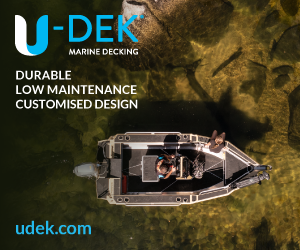Kiwi America's Cup domination - What can Oracle Team USA do about it?
by Mark Jardine on 19 Jun 2017
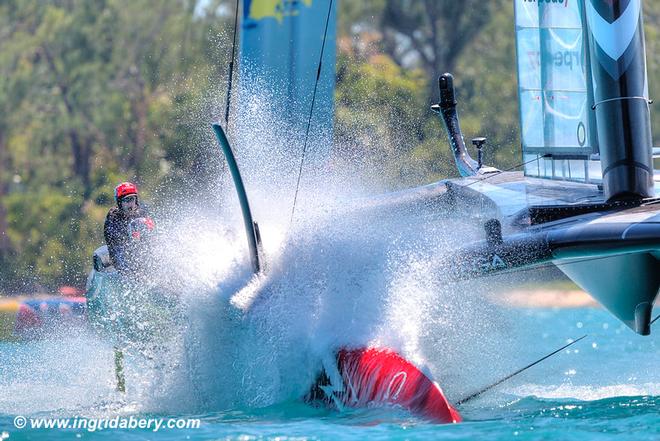
2017 America's Cup Finals - Day 2 Ingrid Abery
http://www.ingridabery.com
Emirates Team New Zealand have won the first four races in the 35th America's Cup Match. There has been the odd close moment, but the Kiwis have undoubtedly been faster on every point of sail, simply sailing away from Oracle Team USA.
There are now five days until the next race on Saturday and the question is what, if anything, can Jimmy Spithill and his team do about it?
Let's look at the two boats, analyse the differences and see if the Americans can change anything:
- Cyclors: It grabbed the headlines ever since Sail-World.com's Richard Gladwell broke the story that Emirates Team New Zealand were using cycle power as opposed to the arm-grinders all the other teams chose. Various experts have shown that the legs generate around 30% more power than the arms, and the Kiwis never seem to be short of the hydraulic oil pressure that is often referred to and which is used to trim the foils and the wing. All the other teams say they assessed and dismissed the option, but it's clearly working well.
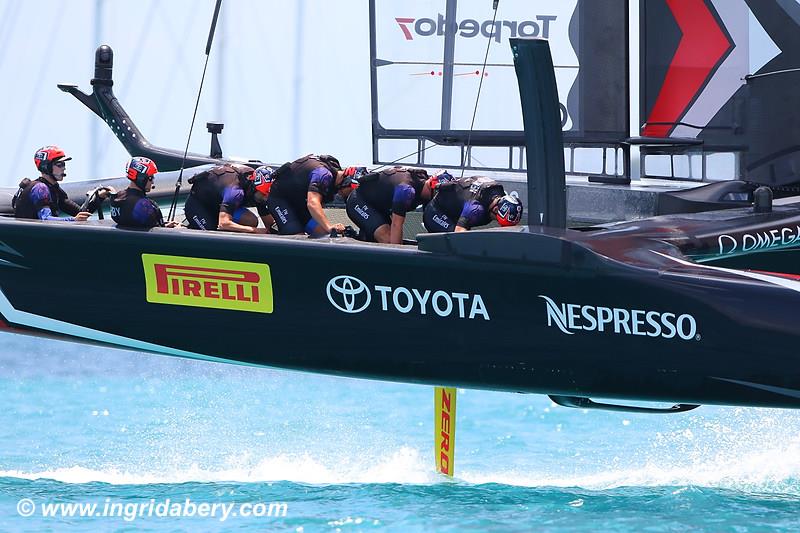
Emirates Team New Zealand cyclors at work during the 35th America's Cup Match - photo © Ingrid Abery / www.ingridabery.com
Oracle Team USA have implemented a 'cyclor-lite' system with Tom Slingsby sometimes seen cycling downwind whilst calling tactics, but this is very much an afterthought addition. While I'm sure the shore team could change the grinders to cycle stations in five days, it's nowhere near as quick to change a grinder's physique from arm strength to leg strength; this is a change that I don't think can be made by the Americans.
- Foil Design: All the teams, apart from the Kiwis, have gone for a smooth L-shaped foil with either a straight horizontal element (or arm) or a slight curve. The Kiwis have a pronounced kink at the mid-point and have generally been carrying longer foils than any of the other teams. They also cant the foil heavily outside the hull, which gives more righting moment and then presents the point of the foil beyond the kink horizontally underwater.
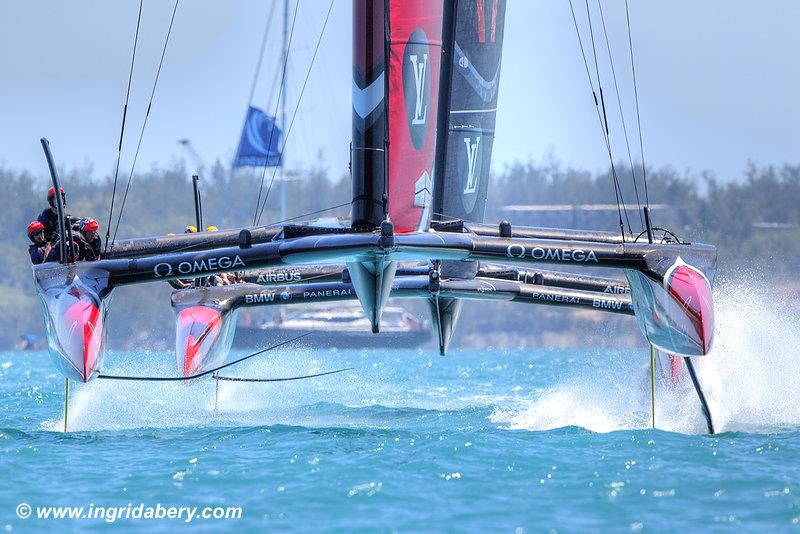
Emirates Team New Zealand foil design compared to ORACLE TEAM USA during the 35th America's Cup Match - photo © Ingrid Abery / www.ingridabery.com
There are strict limits on how many foils each team can produce, and the Kiwi design requires extra control systems for the heavy canting seen on their boat, so replicating this would be a major feat of engineering in a very short timescale.
- Foil Control: This again is an area where Emirates Team New Zealand have gone down a different avenue. The control of the boat is divided up amongst three people, with Peter Burling just steering and thinking tactically. Glenn Ashby is trimming the wing and Pete's 49er crew Blair Tuke is trimming the foils. All the other teams have gone the route of the helm controlling ride height using grips on the steering wheel.
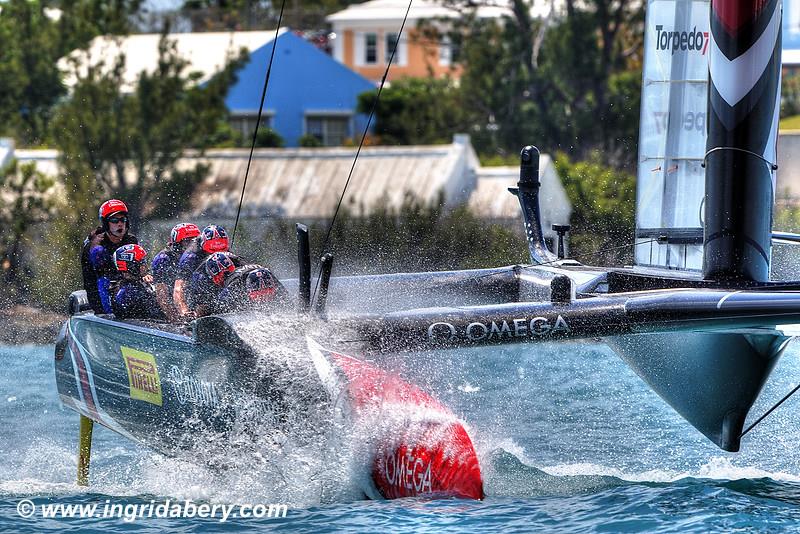
Emirates Team New Zealand divide up duties for sailing the boat - photo © Ingrid Abery / www.ingridabery.com
A major change in sailing style like this would take weeks of practice to get right for Oracle Team USA so this modification is out of reach for them. This is another major advantage that the cyclors system provides as Tuke is one of the cyclists while controlling the foils with triathlon-style handlebars.
- Aerodynamics and Line-of-Sight: It's very noticeable that Peter Burling is sitting down in his pod while helming, whereas Jimmy Spithill is sitting on the side of the boat. The Kiwi crew positions have brought the whole team down to a lower level, giving a far more aerodynamic shape to the whole crew.
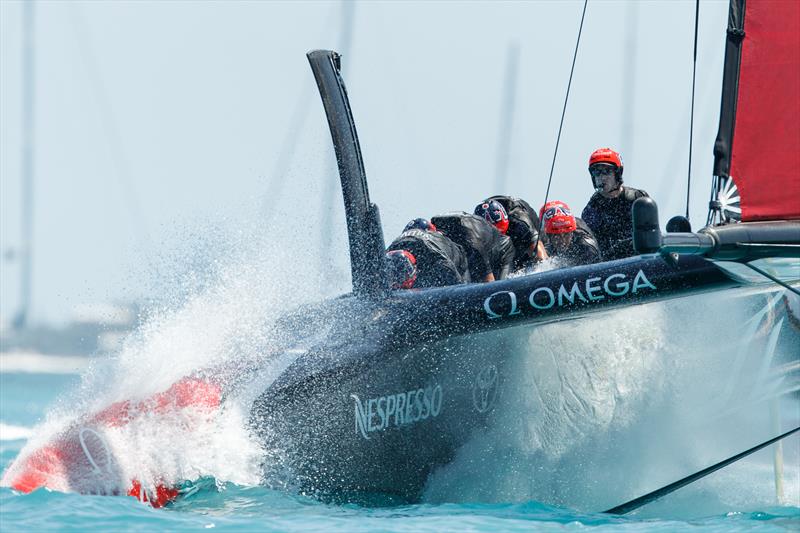
A clean line-of-sight for Peter Burling on Emirates Team New Zealand - photo © Richard Hodder / ETNZ
When travelling at up to 30 knots upwind, with 50+ knots of apparent wind over the deck, this makes a major difference. Burling also seems to have a far clearer view from his helming position, and when you have to make decisions extremely quickly at the speeds these boats travel at, a clear line-of-sight is a major bonus.
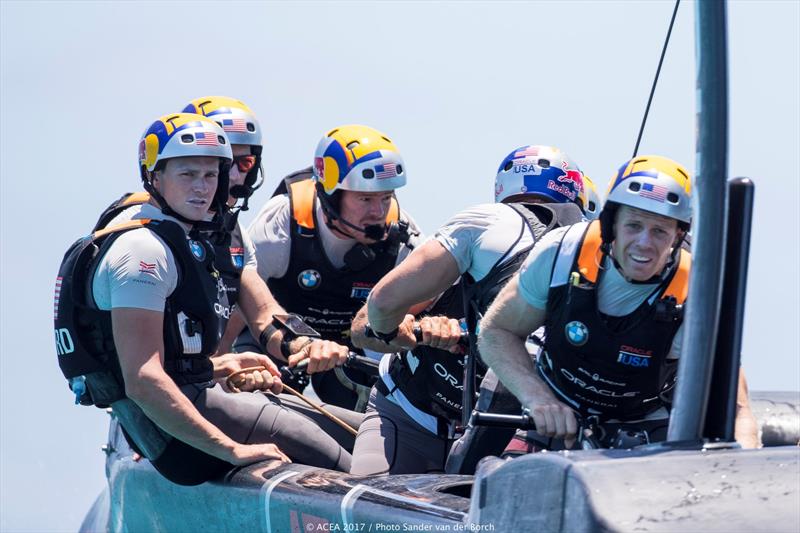
A more distorted view for Jimmy Spithill on ORACLE TEAM USA - photo © ACEA 2017 / Sander van der Borch
Can the Americans make their crew positions more aerodynamic? Without a host of changes I don't think this is possible in five days, and they'd also have to adapt to their new positions.
Overall the Kiwis have taken a different approach to the other teams on a number of key aspects and it's proving to be a better all-round package. As with the 34th America's Cup - when Emirates Team New Zealand were the team that worked out the AC72 could be a foiler - they have again proved to be great innovators. The difference this time is they managed to keep their cards close to their chest and the other teams haven't had the time to play catch-up.
Oracle Team USA have shown bursts of speed, but it has been erratic and they just don't seem to have the same level of control as Emirates Team New Zealand. With the 'conventional' setup the majority of the sailing skill falls on the shoulders of Jimmy Spithill and it is quite possibly too much for one man to do, whatever their credentials.
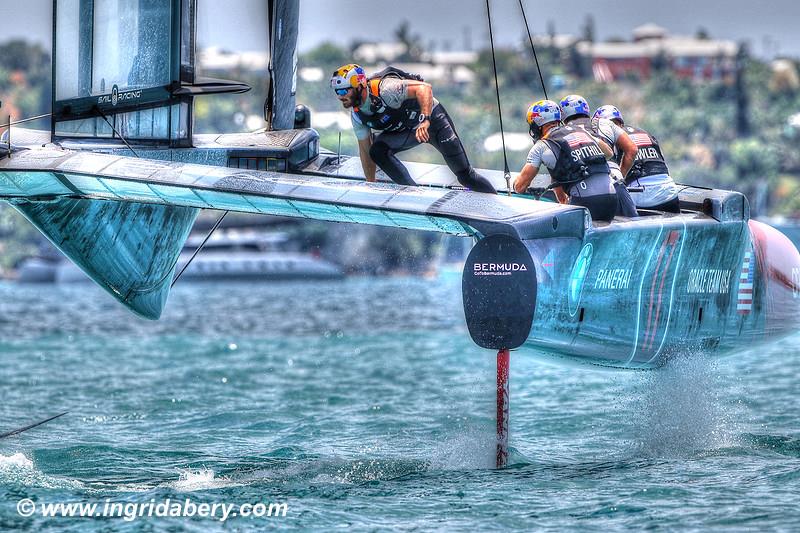
Emirates Team New Zealand dominate ORACLE TEAM USA on day 1 of the 35th America's Cup Match - photo © Ingrid Abery / www.ingridabery.com
The final option on the water is for Oracle Team USA to become more aggressive in the pre-starts. Sir Ben Ainslie showed that the Kiwis can be caught out, as demonstrated with the big pitch-pole in high winds after Land Rover BAR forced Emirates Team New Zealand high in the pre-start. Artemis Racing also showed that you can keep them at bay if you get ahead at the start and take a lead into the first buoy. The problem is Jimmy Spithill just hasn't made any impact on the ice-cool Peter Burling and has lost all four of the starts so far.
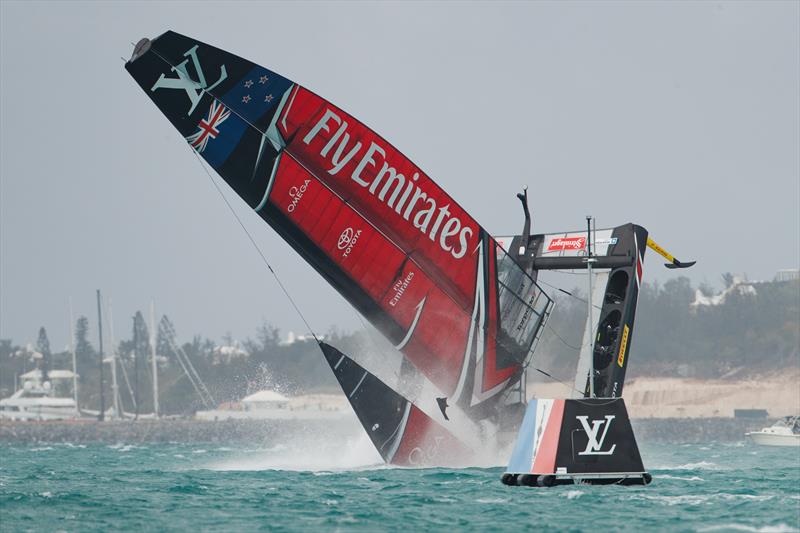
Emirates Team New Zealand capsize on the second day of the Louis Vuitton America's Cup Challenger Playoffs - photo © Richard Hodder / ETNZ
Overall I feel that the writing's on the wall for this America's Cup and I just don't think the American team will be able to replicate the great comeback of 2013. Racing starts again on Saturday 24th June with two races a day. With the way things are going the Kiwis may well have wrapped up the event by Sunday night.
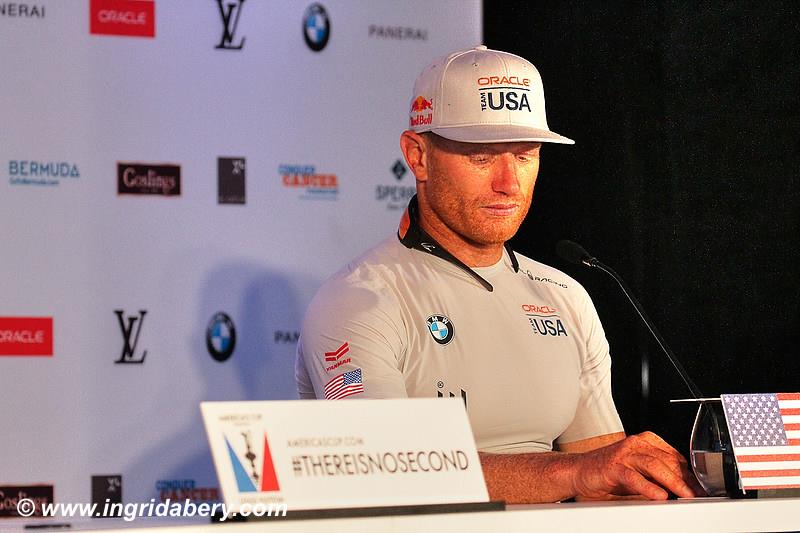
A downbeat Jimmy Spithill after day 1 of the 35th America's Cup Match - photo © Ingrid Abery / www.ingridabery.com
If you want to link to this article then please use this URL: www.sail-world.com/154777
